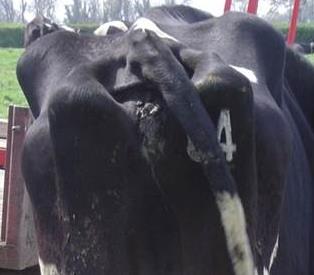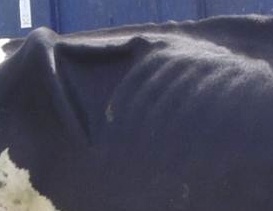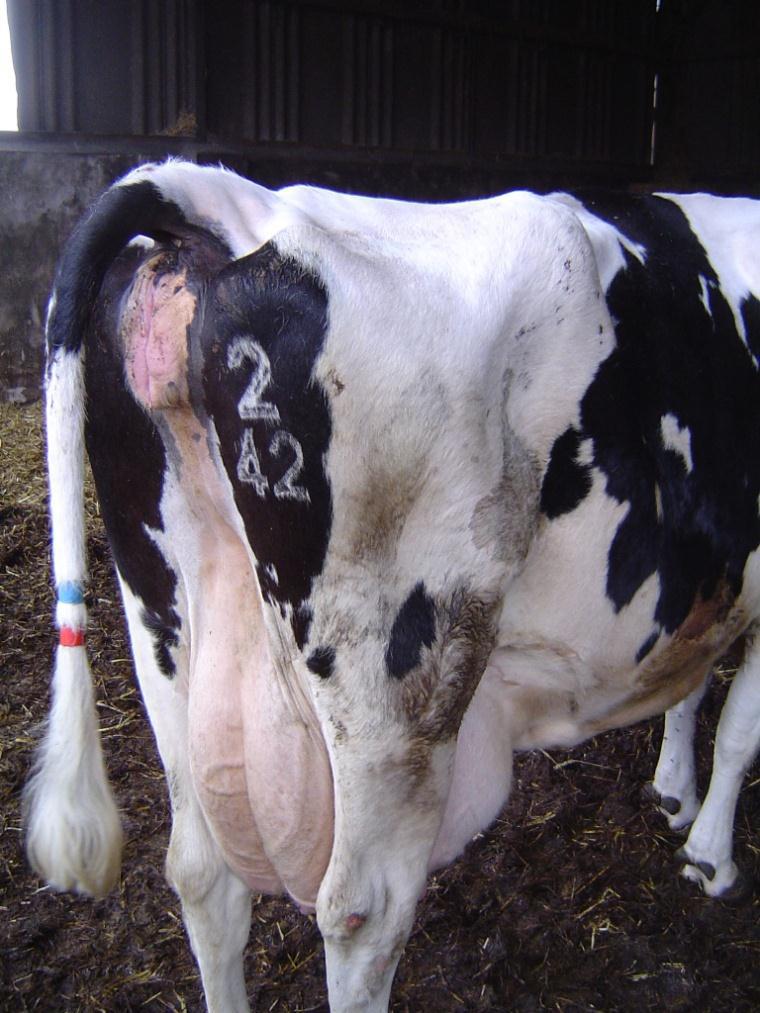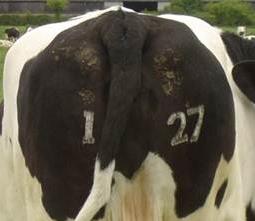Body Condition
Why is it measured?
Body condition scoring is a technique for assessing the condition of livestock at regular intervals. The purpose of condition scoring is to achieve a balance between economic feeding, good production and welfare. Body condition will vary during a healthy cow’s lactation. She will most likely be at her thinnest around peak milk yield and at her fattest around drying off. However, despite this variation her condition should not fall below score 2* or rise above score 3.5. A cow with a body condition score of less than 2 is excessively thin and is not meeting the nutritional demands of her body. This may be as a result of feed quality/quantity, access to feed or disease. Thin animals may suffer from chronic hunger, discomfort (especially in cubicles), are predisposed to health issues (metabolic, infectious and physical) and are more likely to have reduced fertility. Cows with a body condition score of 4 or 5 are overweight. Fat cows are at risk of dystocia (difficult calvings), more likely to develop metabolic diseases such as ketosis, fatty liver disease and milk fever and are prone to mastitis, lameness and infertility.
*Based on Defra condition scoring method
How to assess and score using the AssureWel measure
| 2. Body condition Individual measure |
Sample: 20 cows selected at random (3 or more assessed jointly with stockperson)
Visually assess cattle based on the Defra condition scoring method, viewing the animal from behind and from the side, the tail head and loin area:
Scoring: |
Thin =
|
Defra score 1 to less than 2
Score 1: Tail head – deep cavity with no fatty tissue under skin.
Skin fairly supple but coat condition often rough.
Loin – spine prominent and horizontal processes sharp.
|
 |
 |
The following list should assist in making a confident decision with cows in BCS <2.
Individual vertebra will be distinct along the backbone.
Individual horizontal processes are visible as individual bones and give a prominent shelf-like appearance to the loin.
Outline of 4 or more ribs are visible.
Outline of the hook bone is visible and angular with no fat padding.
Outline of the pin bone is visible and angular with no fat padding.
Tailhead is prominently visible. Either side of tailhead is sunken and hollow. There are folds of skin in the depression between the tail head and pin bone.
Thurl is sunken and curved in.
|
| Moderate - Good = |
Defra score 2 or 3 to less than 4
Score 2: Tail head – shallow cavity but pin bones prominent; some fat under skin, skin supple. Loin – horizontal processes can be identified individually with ends rounded.
Score 3: Tail head – fat cover over whole area and skin smooth but pelvis may be seen. Loin – end of individual horizontal process
cannot be seen; only slight depression in loin.
|
 |
 |
| Fat = |
Defra score 4 to 5
Score 4/5: Tail head – completely filled or buried and folds and patches of fat evident. Loin – cannot see horizontal processes and completely rounded appearance (a slight loin
depression may still be seen).
|
 |
 |
The following list should assist in making a confident decision with cows in BCS ≥4.
Back is solid and straight.
Individual horizontal processes are no longer visible as individual bones but a rounded shelf-like appearance is still observable.
Hook bones are rounded with obvious fat padding or may not be obviously visible because they are buried in fat.
Pin bones are rounded with obvious fat padding or may not be obviously visible because they are buried in fat.
Tail head and thurl is filled in. |
- Mobility
- Body condition
- Cleanliness
- Hair loss, lesions
- Swellings
- Broken tails
- Response to stockperson
- Cows needing further care
- Mastitis
- Calf/Heifer survivability
- Cull and Casualty Cows